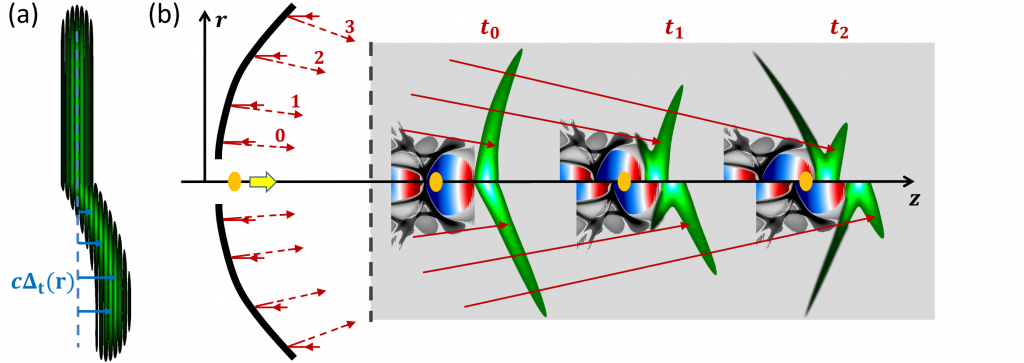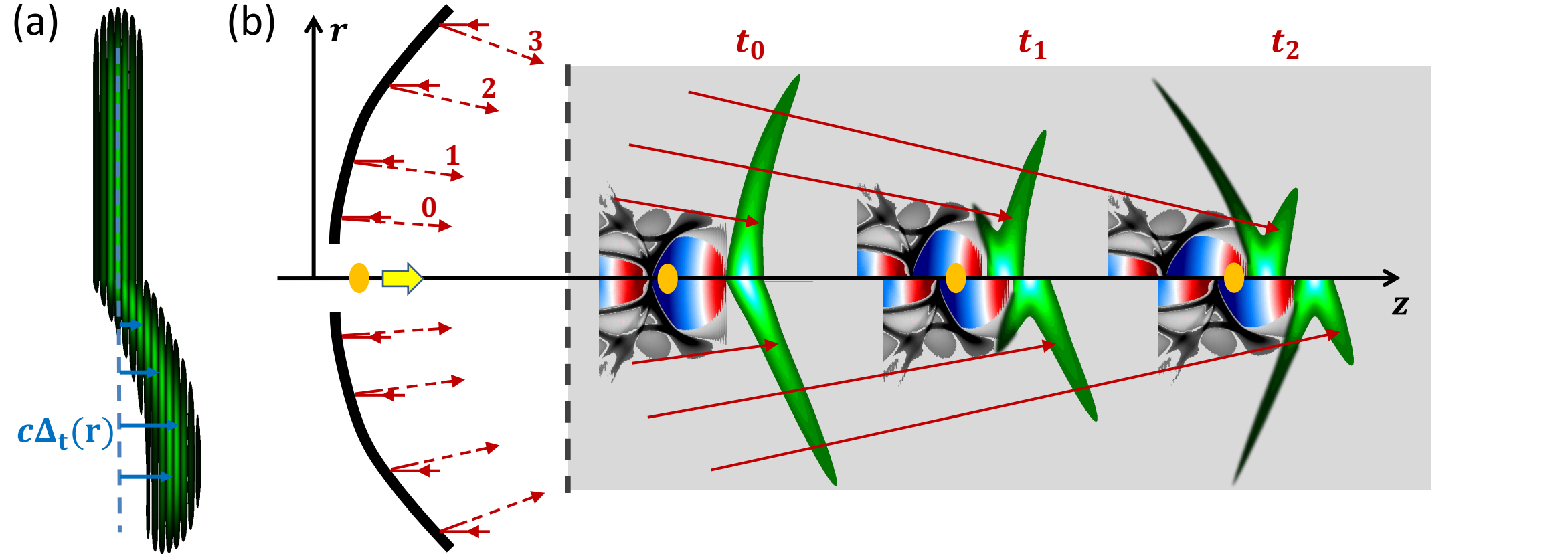Phase-locked laser-wakefield electron acceleration
A Laser-Plasma Accelerator (LPA) uses accelerating fields (wakefield) that are typically 3 orders of magnitude higher than in radio-frequency accelerators. These extreme fields could allow for a drastic decrease of accelerator sizes for scientific, medical or industrial applications and make of LPAs promising candidates for future high-energy colliders. Producing a very large accelerating field is however not sufficient for reaching high energies; electron bunches trapped in the wakefield have also to experience acceleration on long distances, which remains challenging in a LPA because of 3 phenomena: diffraction, pump depletion and dephasing.
We proposed an acceleration concept that allows us to tackle simultaneously these three phenomena, leading to new favorable energy scaling for LPA. It associates high-intensity quasi-Bessel beams for generating the plasma wave and spatio-temporal couplings (i.e. dependencies in the laser field requiring a non-separable time-space description) for controlling its velocity. This concept leads to a new regime, dephasing-free, where the electron beam energy gain increases by more than one order of magnitude compared to a regular LPA.




